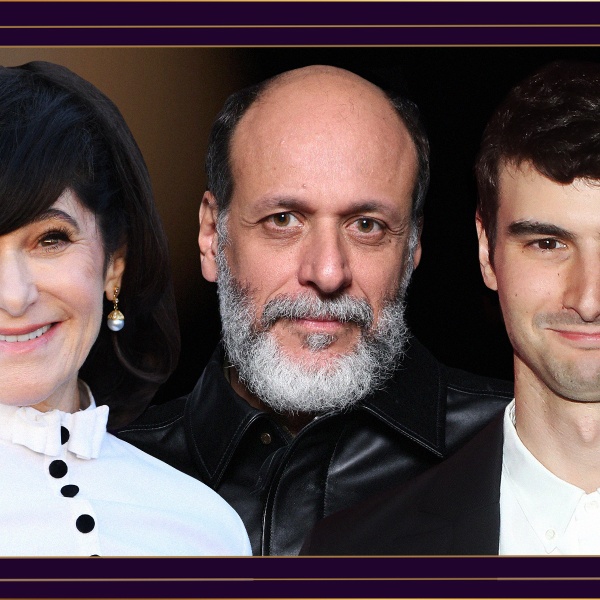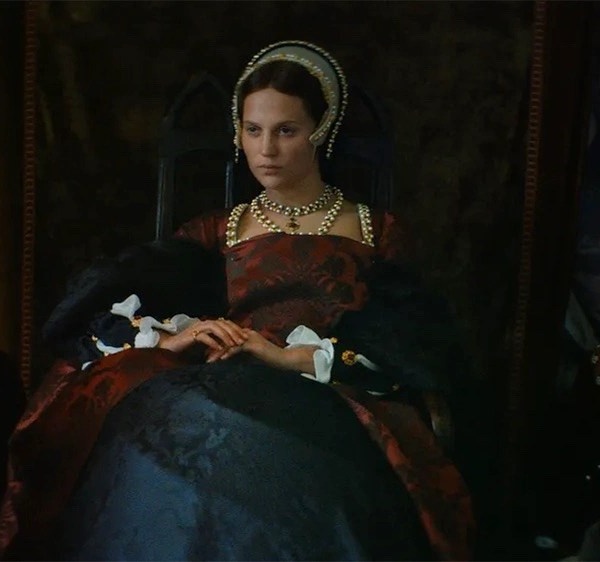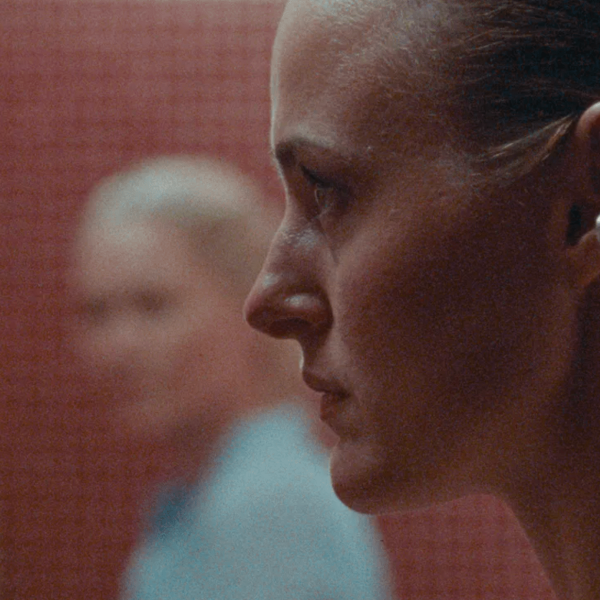 Almost 20 years later, Todd Haynes‘s debut feature is still a sucker punch to the gut. Erratic and experimental, playful and dark, IFC is celebrating its 20th anniversary with a week long exhibition of a new 35mm print at their theater in New York City. Probably the strangest (and strongest) first impression to give to the film world, “Poison” follows three interwoven stories, done in completely different styles to best illustrate the issue at hand. “Hero” is an extremely 90s faux TV documentary consisting of talking head townsfolk, the subject being the recent murder of a man by his son, who flew away after the crime. “Horror,” a B-movie drive-in done in black and white, follows a scientist who accidentally ingests his “elixir of human sexuality,” which deforms his face and causes him to kill. The last is “Homo,” which chronicles the budding relationship between two prison inmates in a muddy, dark style directly representative not just of the setting, but of the inner workings of each character and their disparate relationship. It’s definitely the oddest Haynes has ever been – and this is keeping in mind the fact that his next film would be a tense thriller in which a housewife is allergic to her materialistic and empty middle-class existence. Last Thursday the filmmaker swung by one of the screenings in NYC to share a few words with the audience and express gratitude for people still interested in his early work.
Almost 20 years later, Todd Haynes‘s debut feature is still a sucker punch to the gut. Erratic and experimental, playful and dark, IFC is celebrating its 20th anniversary with a week long exhibition of a new 35mm print at their theater in New York City. Probably the strangest (and strongest) first impression to give to the film world, “Poison” follows three interwoven stories, done in completely different styles to best illustrate the issue at hand. “Hero” is an extremely 90s faux TV documentary consisting of talking head townsfolk, the subject being the recent murder of a man by his son, who flew away after the crime. “Horror,” a B-movie drive-in done in black and white, follows a scientist who accidentally ingests his “elixir of human sexuality,” which deforms his face and causes him to kill. The last is “Homo,” which chronicles the budding relationship between two prison inmates in a muddy, dark style directly representative not just of the setting, but of the inner workings of each character and their disparate relationship. It’s definitely the oddest Haynes has ever been – and this is keeping in mind the fact that his next film would be a tense thriller in which a housewife is allergic to her materialistic and empty middle-class existence. Last Thursday the filmmaker swung by one of the screenings in NYC to share a few words with the audience and express gratitude for people still interested in his early work.
Inspired by the likes of Jean Genet, Haynes was also deeply affected at what he saw going on in homosexual society, particularly how they were being mistreated and the murderous onslaught of HIV and AIDS saying, “I’m proud that people were able to make films like this at all, and it was responding to a particular historical moment that I felt personally involved in.” As so, the piece is very unforgiving in both its brutality and satire, not shying away from anything in the lifestyle including sex. For a feature this topical and avant garde to be released in a movie theater, let alone get funding, is a triumph on its own.
 One of the first to tackle these issues and one of the first to do it in a startlingly creative way, it’s no surprise that the film caused a ruckus with the mainstream, even considering its non-conventional structure and style which would usually shut those people out. Reverend Donald Wildmon publicly attacked both it and one of the film’s backers, the National Endowment for the Arts, bashing them for funding a film full of pornographic sex scenes. It was nothing other than hate talk, as the movie contained nothing of the sort. “He read a review in Hollywood Reporter that saw it at Sundance, and he interpreted the movie as being all about anal sex,” but Haynes shrugged it off. “Then it exploded. It all happened timed too perfectly for the release of the film.” Sounds like a complete backfire for Wildmon, as it likely gave it good worth of mouth, helping it set a record for New York’s Angelika Theater’s all time opening-weekend gross. Whether audiences were able to digest its bat-shit makeup is debatable, but it served as a rallying cry to stick it to those that were being ignorant, hateful, and extremely vocal.
One of the first to tackle these issues and one of the first to do it in a startlingly creative way, it’s no surprise that the film caused a ruckus with the mainstream, even considering its non-conventional structure and style which would usually shut those people out. Reverend Donald Wildmon publicly attacked both it and one of the film’s backers, the National Endowment for the Arts, bashing them for funding a film full of pornographic sex scenes. It was nothing other than hate talk, as the movie contained nothing of the sort. “He read a review in Hollywood Reporter that saw it at Sundance, and he interpreted the movie as being all about anal sex,” but Haynes shrugged it off. “Then it exploded. It all happened timed too perfectly for the release of the film.” Sounds like a complete backfire for Wildmon, as it likely gave it good worth of mouth, helping it set a record for New York’s Angelika Theater’s all time opening-weekend gross. Whether audiences were able to digest its bat-shit makeup is debatable, but it served as a rallying cry to stick it to those that were being ignorant, hateful, and extremely vocal.
Casting was important, and fantastic performances were culled from people that are still unknown today (aside from a small appearance by John Leguizamo, credited under Damien Garcia). Because of the limited funds, Haynes found himself completely immersed in the casting process from square one, taking over traditional casting director duties. An ad went up on popular New York casting magazine Backstage, locals were rounded up for the faux-doc section, and rehearsals began. “It was an interesting experience for me, (though) it was the first and last time….it was a long process, improvisation, and I don’t do that anymore. I don’t have the time. It was the young energy and curiosity that got us deep into that.” For all of this “crudeness,” he really pulls it off: it’s hard to believe the people in “Hero” are faking it, “Horror” seems like a newly unearthed gem from an abandoned drive-in, and “Homo” does the grimy prison routine so well that it could easily pass for a low-budget independent film today.
 “Poison” is also one of the first examples of “New Queer Cinema,” a movement of independent films that openly dealt with homosexual and transgender issues. This wave of new features were warmly welcomed in the community, as these issues were very under-represented at the time. Of course, as with all labels, there was some backlash by those who either felt the term was silly or too vague. “People can be cynical about the term and say that it was just coined by a critic after this film and ‘Paris is Burning,’ but I felt proud of that,” Haynes said. “They weren’t just dealing with political and personal content, all filmmakers were looking at how stories were told and different ways of telling them.” And it’s true: some of the most interesting American film-makers still working today were part of this clique, including Gus Van Sant, Gregg Araki, and John Cameron Mitchel to name just a few.
“Poison” is also one of the first examples of “New Queer Cinema,” a movement of independent films that openly dealt with homosexual and transgender issues. This wave of new features were warmly welcomed in the community, as these issues were very under-represented at the time. Of course, as with all labels, there was some backlash by those who either felt the term was silly or too vague. “People can be cynical about the term and say that it was just coined by a critic after this film and ‘Paris is Burning,’ but I felt proud of that,” Haynes said. “They weren’t just dealing with political and personal content, all filmmakers were looking at how stories were told and different ways of telling them.” And it’s true: some of the most interesting American film-makers still working today were part of this clique, including Gus Van Sant, Gregg Araki, and John Cameron Mitchel to name just a few.
Currently available only on VHS, “Poison” is practically begging for a proper DVD/Blu-ray release, along with its successor “Safe.” Criterion, I know you hear this a lot, but, please? Haynes is currently editing his miniseries “Mildred Pierce,” which you can catch on HBO in March 2011. As for what’s coming afterwards, he’s in no rush, and taking it one step at a time. “We’re cutting “Mildred” now… trying to make the deadline. I don’t even know when it is,” he laughed. “I have a few ideas but nothing I’ve settled on yet.” Hopefully he doesn’t stay away for too long, as he’s one of the few directors in the big leagues that continues to challenge modern narrative conventions.






